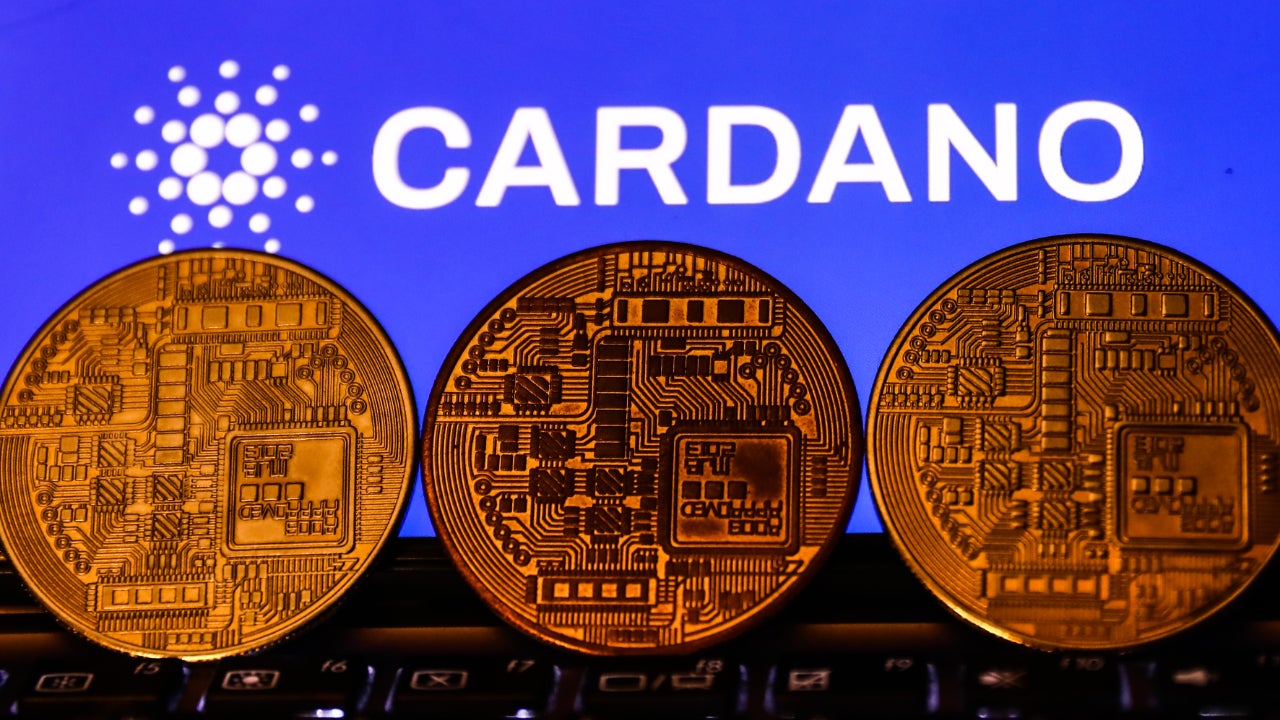Introduction
Welcome to the fascinating world of Bitcoin and its underlying technology, the blockchain. As cryptocurrency enthusiasts, developers, and investors familiarize themselves with this revolutionary digital currency, they inevitably encounter a multitude of technical terms and concepts. One such term is UTXO, which stands for Unspent Transaction Output. This article aims to demystify UTXOs and shed light on their significance within the Bitcoin blockchain.
Understanding UTXOs is crucial for anyone looking to gain a deeper insight into the workings of Bitcoin and its decentralized network. In simple terms, UTXOs represent the individual units of Bitcoin that have not yet been spent and are available as inputs for future transactions. Each UTXO holds a specific value and is associated with the public key address of its recipient.
The concept of UTXOs forms the foundation of how transactions are structured and verified on the Bitcoin blockchain. Unlike traditional banking systems that utilize account balances, Bitcoin transactions involve the transfer of UTXOs to create new transaction outputs. By leveraging UTXOs, Bitcoin provides a transparent and secure means of recording ownership and facilitating peer-to-peer transactions without the need for intermediaries.
UTXOs play a significant role in ensuring the security and integrity of the Bitcoin network. The decentralized nature of the blockchain relies on the consensus among network participants to validate transactions and maintain a shared ledger. With each transaction, UTXOs are created and consumed, forming a chain of ownership that is verified by nodes on the network through complex cryptographic algorithms.
In the next sections, we will explore how UTXOs work in the Bitcoin blockchain, their advantages, challenges, and limitations, as well as the management of UTXOs and their role in securing the blockchain. So, let’s dive deeper into the world of UTXOs and unravel the inner workings of the Bitcoin blockchain.
Definition of UTXOs
Before we delve into the intricacies of UTXOs in the Bitcoin blockchain, let’s start by understanding what UTXOs actually are. As mentioned earlier, UTXO stands for Unspent Transaction Output. In the context of Bitcoin, it refers to the individual units of Bitcoin that have not been used or spent in previous transactions.
Each UTXO holds a specific value, typically denoted in satoshis, the smallest unit of Bitcoin. These UTXOs are associated with the public key addresses of their recipients, allowing for the traceability and accountability of Bitcoin transactions. When a user initiates a transaction and spends a certain amount of Bitcoin, the UTXOs associated with their address are consumed, creating new UTXOs for the recipient.
To better visualize the concept of UTXOs, consider a digital wallet that holds a balance of 2.5 Bitcoin, comprised of various UTXOs. Let’s assume the wallet contains three UTXOs with values of 1.0, 0.5, and 1.0 Bitcoin respectively. When the user initiates a transaction to send 1.7 Bitcoin to another address, the UTXOs of 1.0 and 0.5 Bitcoin are consumed, leaving an unspent UTXO of 0.8 Bitcoin in the sender’s wallet. The recipient, on the other hand, receives a new UTXO with a value of 1.7 Bitcoin.
This distinctive feature of UTXOs separates Bitcoin from traditional banking systems, where account balances are typically used to track the available funds. Instead of dealing with account balances, Bitcoin transactions revolve around the transfer and consumption of UTXOs to create new transaction outputs.
The UTXO model has several advantages. It enables greater privacy as each transaction can involve different UTXOs, making it challenging to trace the flow of funds. Additionally, UTXOs provide a built-in solution for transaction fee calculations, as the amount of Bitcoin spent in a transaction determines the required fee. Moreover, by utilizing UTXOs, Bitcoin ensures that double-spending, the act of spending the same Bitcoin more than once, is prevented within the network.
In the next section, we will explore how UTXOs function within the Bitcoin blockchain, providing a deeper understanding of their role in enabling secure and transparent transactions. So, let’s delve into the inner workings of UTXOs and their interaction with the blockchain.
How UTXOs Work in the Bitcoin Blockchain
To comprehend how UTXOs operate in the Bitcoin blockchain, it is crucial to grasp the fundamental principles of transaction verification and recording within the network. When a user initiates a transaction, they use one or more UTXOs as inputs to create new transaction outputs.
Let’s consider a scenario where Alice wants to send 1 Bitcoin to Bob. Alice’s wallet contains a UTXO worth 2 Bitcoin, which she received in a previous transaction. To create a new transaction, Alice references the UTXO as the input and specifies the recipient, Bob’s public key address, as the output. The leftover Bitcoin after deducting the transaction amount and fees generates a new UTXO, which is then associated with Alice’s address, preserving the remaining balance.
Once Alice broadcasts the transaction to the network, miners pick it up and include it in a new block. Miners validate the transaction by verifying the digital signature and checking whether the referenced UTXOs have not been spent in previous transactions. Every time a UTXO is referenced as an input in a transaction, its status changes from “unspent” to “spent.”
One essential aspect of UTXOs is that they are indivisible units. This means that if a transaction involves a UTXO of 2 Bitcoin, but only 1 Bitcoin is needed, the remaining 1 Bitcoin is sent back to the sender as change. This change generates a new UTXO associated with the sender’s address, essentially preserving the unspent amount.
UTXOs are integral to maintaining the transparency and integrity of the blockchain. Because every transaction must reference unspent outputs as inputs, it ensures that the funds being transferred actually exist and are legitimate. The UTXO model also aids in preventing double-spending, as attempting to spend the same UTXO multiple times would result in the network rejecting subsequent transactions referencing the already spent UTXO.
Another noteworthy aspect is that UTXOs are not permanently tied to specific addresses. They can be transferred to different addresses as part of transactions, enabling the decentralization and fungibility of Bitcoin. This characteristic adds an additional layer of privacy to Bitcoin transactions, as the ownership history of UTXOs becomes more obscured with each transfer.
In summary, UTXOs are the individual units of Bitcoin that have not been spent in previous transactions. They serve as inputs to create new transaction outputs, ensuring the validity, transparency, and security of the Bitcoin blockchain. By using UTXOs, Bitcoin provides a decentralized and trustless method of conducting transactions without relying on intermediaries or account balances.
In the next section, we will explore the advantages of using UTXOs in the Bitcoin blockchain, highlighting the benefits they bring to the network and its participants.
Advantages of Using UTXOs
The utilization of UTXOs in the Bitcoin blockchain offers several advantages that contribute to the functionality and resilience of the network. These advantages enhance the security, privacy, and efficiency of transactions within the Bitcoin ecosystem.
1. Security: UTXOs provide a robust security mechanism by ensuring that every transaction is verified based on the availability of unspent outputs. This prevents the occurrence of double-spending, making Bitcoin transactions secure and reliable.
2. Privacy: UTXOs enhance privacy within the Bitcoin network. By utilizing UTXOs, each transaction can involve different UTXOs, making it difficult to trace the flow of funds and associate specific UTXOs with individuals or addresses. This feature enhances the confidentiality of transactions and protects user identities.
3. Scalability: The UTXO model offers inherent scalability advantages compared to other account-based systems. Since each UTXO is an independent and indivisible unit, transactions involving multiple UTXOs can be processed in parallel, resulting in improved transaction throughput and scalability.
4. Fee Calculation: UTXOs provide a built-in solution for calculating transaction fees. The size and number of UTXOs used as inputs in a transaction determine the fee associated with it. This ensures that users have control over the fees they pay and allows for more precise fee estimation based on transaction size.
5. Flexibility: UTXOs offer flexibility in transaction management. Users have the ability to select which UTXOs to use as inputs for a transaction, giving them control over the specific coins they want to spend. This flexibility allows users to optimize their transaction outputs, ensuring they receive change back as separate UTXOs and allowing for more precise control over their funds.
6. Blockchain Efficiency: The use of UTXOs contributes to the efficiency of the blockchain. By referencing unspent outputs as inputs in transactions, the blockchain does not need to maintain a comprehensive account balance for each address. Instead, the unspent outputs serve as the basis for validating transactions, reducing the complexity and resource requirements of the network.
7. Auditability: UTXOs enable transparent auditing of transactions within the blockchain. Each UTXO can be traced back to its origin and validated through the chain of transactions, providing a verifiable and immutable record of ownership and transaction history.
These advantages highlight the power and versatility of UTXOs in facilitating secure, private, and efficient transactions within the Bitcoin blockchain. By leveraging UTXOs, Bitcoin achieves a high level of trustlessness, decentralization, and transparency, making it a compelling solution for peer-to-peer digital transactions.
In the next section, we will explore the challenges and limitations associated with UTXOs in the Bitcoin blockchain, providing a balanced view of their impact on the network.
Challenges and Limitations of UTXOs
While UTXOs offer numerous advantages in the Bitcoin blockchain, there are also several challenges and limitations associated with their use. These factors should be taken into consideration to understand the potential drawbacks of the UTXO model.
1. UTXO Bloat: As more transactions occur on the Bitcoin network, the number of UTXOs increases over time. This can result in UTXO bloat, where the size of the UTXO set grows, requiring more storage space on network nodes. The resulting impact is slower synchronization and higher resource requirements for running a node.
2. Transaction Size: The UTXO model tends to result in larger transaction sizes compared to account-based models. Each UTXO being spent in a transaction must be referenced as an input, adding to the overall size of the transaction. This can lead to higher transaction fees and reduced efficiency, particularly during periods of high network congestion.
3. UTXO Management: Users must carefully manage their UTXOs to optimize transaction outputs and avoid unnecessary fragmentation. If UTXOs are not managed efficiently, it can result in a higher number of inputs and outputs in transactions, leading to increased transaction fees and complexity.
4. Privacy Challenges: While UTXOs provide enhanced privacy compared to account-based systems, they are not entirely immune to privacy concerns. Transactional patterns and analysis of UTXO flows can still reveal valuable information about users’ activities and identities. Additional privacy-enhancing techniques such as coinjoin or transaction mixing may be required for enhanced anonymity.
5. Smart Contract Limitations: The UTXO model in Bitcoin does not have native support for complex smart contract functionality. While Bitcoin does offer limited scripting capabilities, it does not provide as much flexibility and programmability as other blockchain platforms. This can limit the range of applications and use cases that can be built directly on the Bitcoin network.
6. Synchronization Challenges: Nodes in the Bitcoin network need to synchronize and maintain the entire UTXO set, which can be resource-intensive and time-consuming. As the blockchain grows in size, the initial sync or resynchronization of a node can be a demanding process, impacting the accessibility and usability of the network for new participants.
7. Scalability Concerns: The UTXO model may face scalability challenges as the size of the UTXO set grows. The increased resource requirements for UTXO management and lookup can potentially impact the scalability and performance of the network. Solutions such as UTXO commitments or alternative models need to be explored to address these scalability concerns.
These challenges and limitations showcase some of the trade-offs and considerations when utilizing UTXOs in the Bitcoin blockchain. While UTXOs provide a robust and secure framework for transactional integrity, they also introduce complexities and potential scalability issues that need to be addressed for the long-term scalability and usability of the network.
In the next section, we will explore the management and transactional aspects of UTXOs, providing insights into their practical application within the Bitcoin ecosystem.
UTXO Management and Transactions
Effective management of UTXOs is essential for optimizing transaction outputs, preventing unnecessary fragmentation, and minimizing transaction fees within the Bitcoin ecosystem. Users need to understand the principles and best practices of UTXO management to ensure efficient transactional operations.
1. UTXO Consolidation: UTXO consolidation involves combining multiple small UTXOs into a single larger UTXO. This helps reduce the number of inputs and outputs in transactions, leading to lower transaction fees and improved transaction efficiency. Consolidation is particularly beneficial when UTXOs become fragmented due to receiving small amounts or frequent transactions.
2. Fee Optimization: Optimizing transaction fees is crucial for timely and cost-efficient transactions. By strategically selecting UTXOs with appropriate values, users can determine the desired transaction fee based on the implicit value of the input UTXOs. This allows users to prioritize their transactions and balance fees against confirmation time.
3. Change Addresses: When sending Bitcoin, the change from the transaction is sent back to the sender. It is recommended to use a new change address for each transaction to enhance privacy and prevent address reuse. Proper management of change addresses ensures that funds are correctly accounted for and accessible in future transactions.
4. UTXO Lookups: Nodes on the Bitcoin network need to track and maintain the UTXO set for transaction validation. The efficiency of UTXO lookups is crucial for network performance. Various techniques, such as indexing and caching, are employed to improve the speed and responsiveness of UTXO lookups, optimizing transaction processing and reducing resource requirements.
5. Coin Selection: Coin selection refers to the process of selecting the most appropriate UTXOs as inputs for transactions. Effective coin selection minimizes the number of inputs required and maximizes the available outputs, leading to lower fees and more efficient use of UTXOs. Algorithms and strategies, such as the “most-valuable-first” approach or the “smallest-UTXO-first” approach, can be utilized for optimal coin selection.
6. Transaction Malleability: Transaction malleability is a known limitation within the Bitcoin blockchain that affects UTXOs. It refers to the ability of an attacker to modify the transaction ID without altering its content. While this does not impact the actual funds involved, it can cause complications for transaction tracking and identification. Best practices for UTXO management include taking transaction malleability into account and employing strategies to mitigate its impact.
By employing effective UTXO management practices, users can optimize transaction outputs, reduce transaction fees, and enhance privacy within the Bitcoin network. Understanding the principles of UTXO management goes hand in hand with ensuring smooth and efficient transactional operations.
In the next section, we will explore the role of UTXOs in maintaining consensus and enhancing the security of the Bitcoin blockchain.
UTXO Consensus and Blockchain Security
The UTXO model plays a crucial role in maintaining consensus and enhancing the security of the Bitcoin blockchain. It ensures that transactions are valid, prevents double-spending, and contributes to the immutability and trustlessness of the network.
1. Transaction Validation: UTXOs are at the core of transaction validation within the Bitcoin blockchain. When a transaction is initiated, nodes verify its validity by checking if the referenced UTXOs have been previously spent. This process ensures that the funds being transferred actually exist and have not been used in other transactions, preventing fraudulent activities.
2. Double-Spending Prevention: Double-spending, the act of spending the same Bitcoin more than once, is effectively prevented through the UTXO model. Since every transaction must reference unspent outputs as inputs, attempting to spend the same UTXO multiple times would result in subsequent transactions being rejected by the network. UTXOs ensure the integrity of transactions and maintain a single source of truth in the blockchain.
3. Chain of Ownership: UTXOs create a transparent and traceable chain of ownership within the Bitcoin blockchain. Each UTXO can be traced back to its origin and further validated through a series of transactions. This auditability enhances accountability and prevents unauthorized changes to transaction history, bolstering the security and integrity of the blockchain.
4. Immutable Ledger: UTXOs contribute to the immutability of the blockchain by providing a decentralized and consensus-driven recording of transactions. Once a UTXO is spent, it cannot be reversed or altered. The distributed nature of the blockchain ensures that transactional data recorded through UTXOs are tamper-resistant, resistant to censorship, and resistant to centralized control.
5. Cryptographic Verification: The security of UTXOs is further reinforced through cryptographic verification. Each UTXO is associated with a digital signature, which ensures the authenticity and integrity of the transaction. The use of cryptographic algorithms enables nodes to independently verify the validity of UTXOs, enhancing the trustlessness and security of the blockchain network.
6. Network Consensus: UTXOs play a vital role in achieving consensus within the decentralized Bitcoin network. Through the validation of transactions and the verification of UTXOs, network participants reach a shared agreement on the state of the blockchain. This consensus mechanism ensures that all nodes have an accurate and consistent view of the UTXO set, reinforcing the security and reliability of the network.
By leveraging UTXOs, the Bitcoin blockchain achieves a high level of consensus, security, and trustlessness. The UTXO model enables the validation and tracking of transactions, prevents double-spending, and creates an auditable and immutable ledger. The cryptographic and decentralized nature of UTXOs enhances the security and stability of the blockchain, making it an ideal solution for secure and transparent digital transactions.
In the final section, we will summarize the key points discussed and reiterate the significance of UTXOs within the Bitcoin ecosystem.
Conclusion
The utilization of UTXOs, or Unspent Transaction Outputs, is a fundamental aspect of the Bitcoin blockchain, playing a vital role in ensuring the security, transparency, and efficiency of transactions within the network. UTXOs represent individual units of Bitcoin that have not been spent and are associated with specific public key addresses. The UTXO model differs from traditional banking systems by focusing on the transfer and consumption of these UTXOs to create new transaction outputs, rather than relying on account balances.
UTXOs offer several advantages in the Bitcoin ecosystem. They enhance security by ensuring the validity of transactions and preventing double-spending. UTXOs also bring privacy benefits, as each transaction can involve different UTXOs, making it difficult to trace the flow of funds. Furthermore, UTXOs provide flexibility, fee optimization, and scalability within the blockchain network.
However, UTXOs also pose certain challenges and limitations. UTXO bloat and larger transaction sizes can affect network performance and resource requirements. Proper UTXO management, including consolidation and fee optimization, is crucial for efficient transaction processing. Additionally, privacy concerns, transaction malleability, and scalability issues need to be addressed to maximize the potential of UTXOs in the Bitcoin ecosystem.
The UTXO model is foundational to achieving consensus and enhancing the security of the Bitcoin blockchain. UTXOs form a transparent and traceable chain of ownership, while cryptographic verification and network consensus ensure the integrity and immutability of the ledger. Through UTXOs, the Bitcoin network creates a decentralized, secure, and auditable system for peer-to-peer digital transactions.
Understanding and effectively utilizing UTXOs is essential for participants in the Bitcoin ecosystem. By embracing the principles of UTXO management, users can optimize transaction outputs, reduce fees, and enhance privacy. As the Bitcoin blockchain continues to evolve, addressing the challenges and leveraging the advantages of UTXOs will contribute to a more robust and scalable network.
In conclusion, UTXOs play a significant role in the functioning of the Bitcoin blockchain, offering a secure, transparent, and efficient solution for digital transactions. By embracing the potential of UTXOs and navigating their challenges, participants can contribute to the growth and success of the decentralized revolution powered by Bitcoin.

























